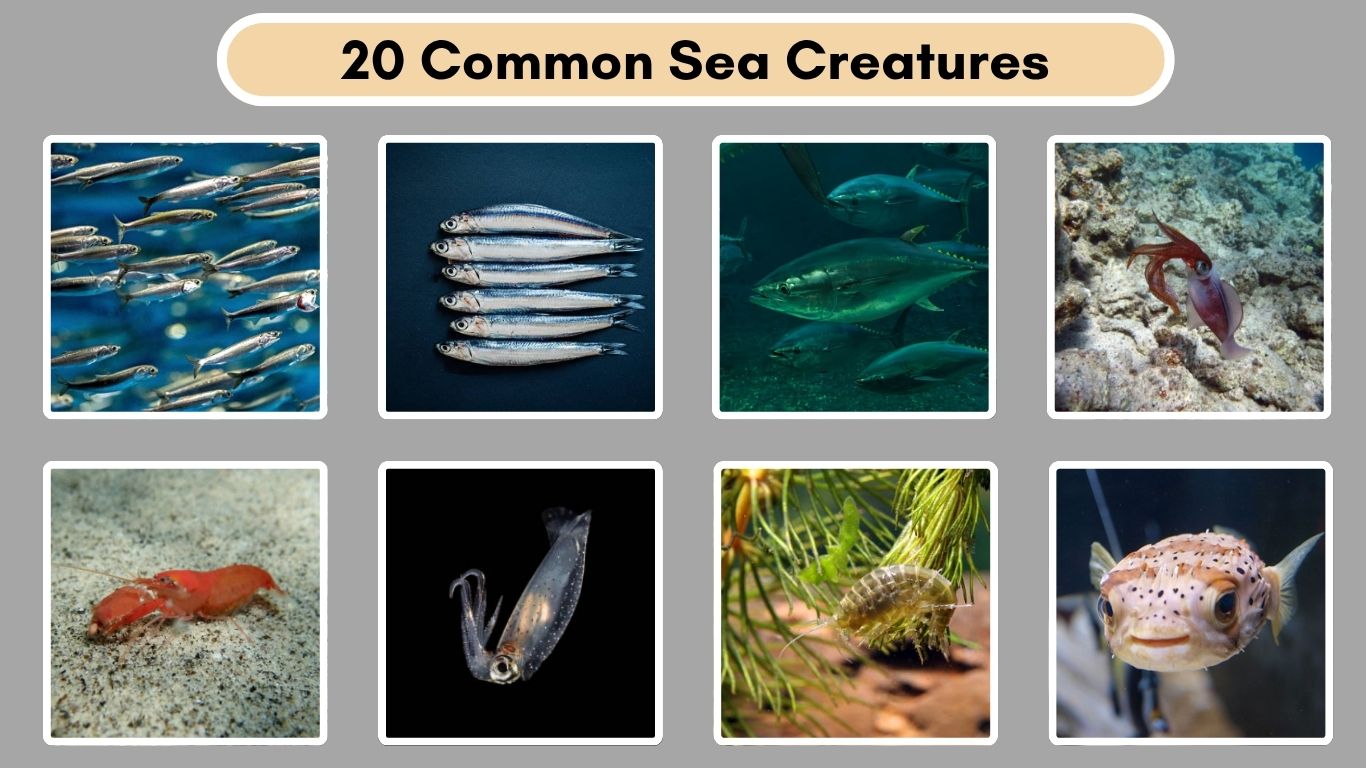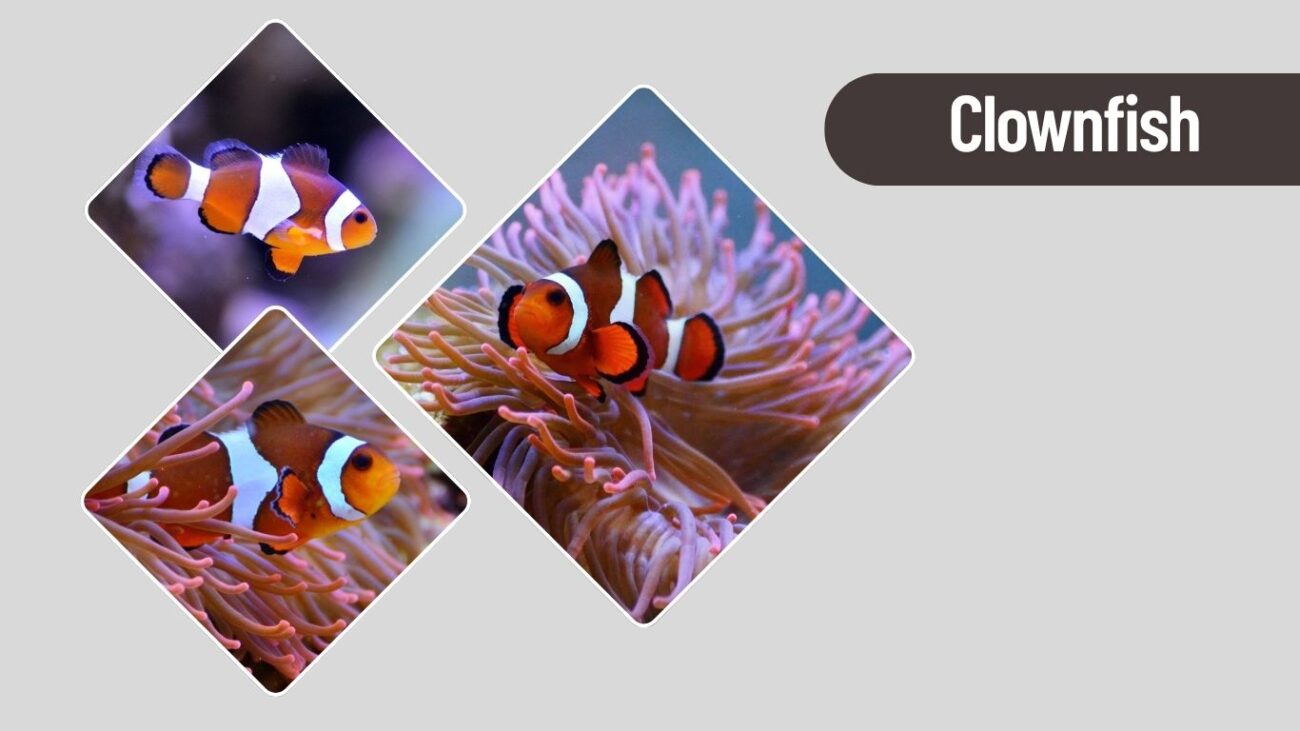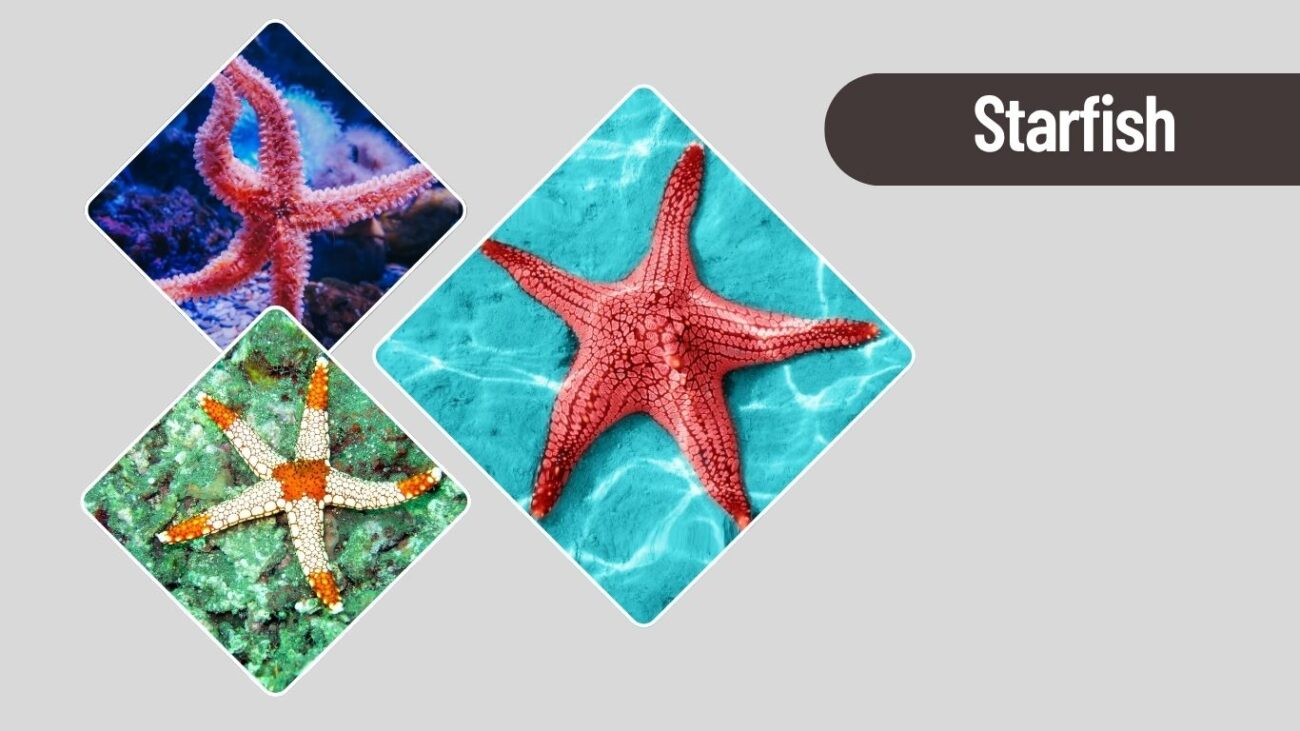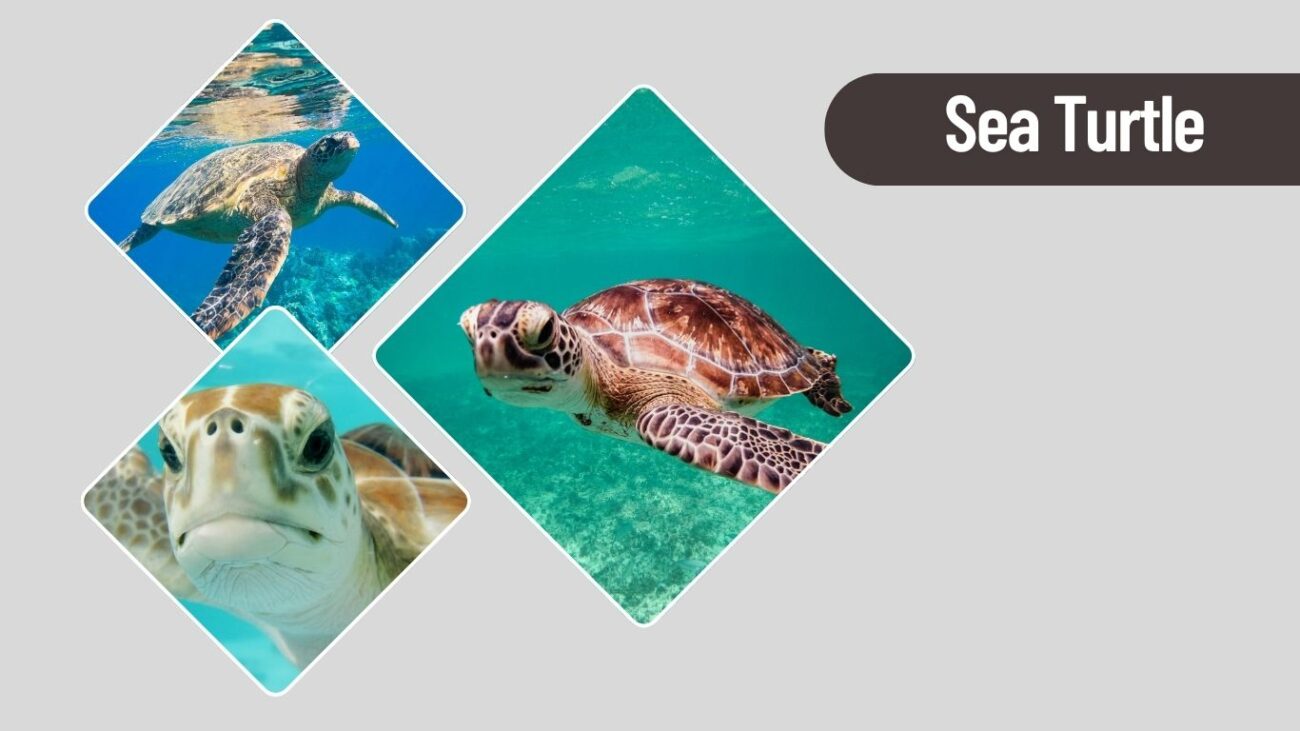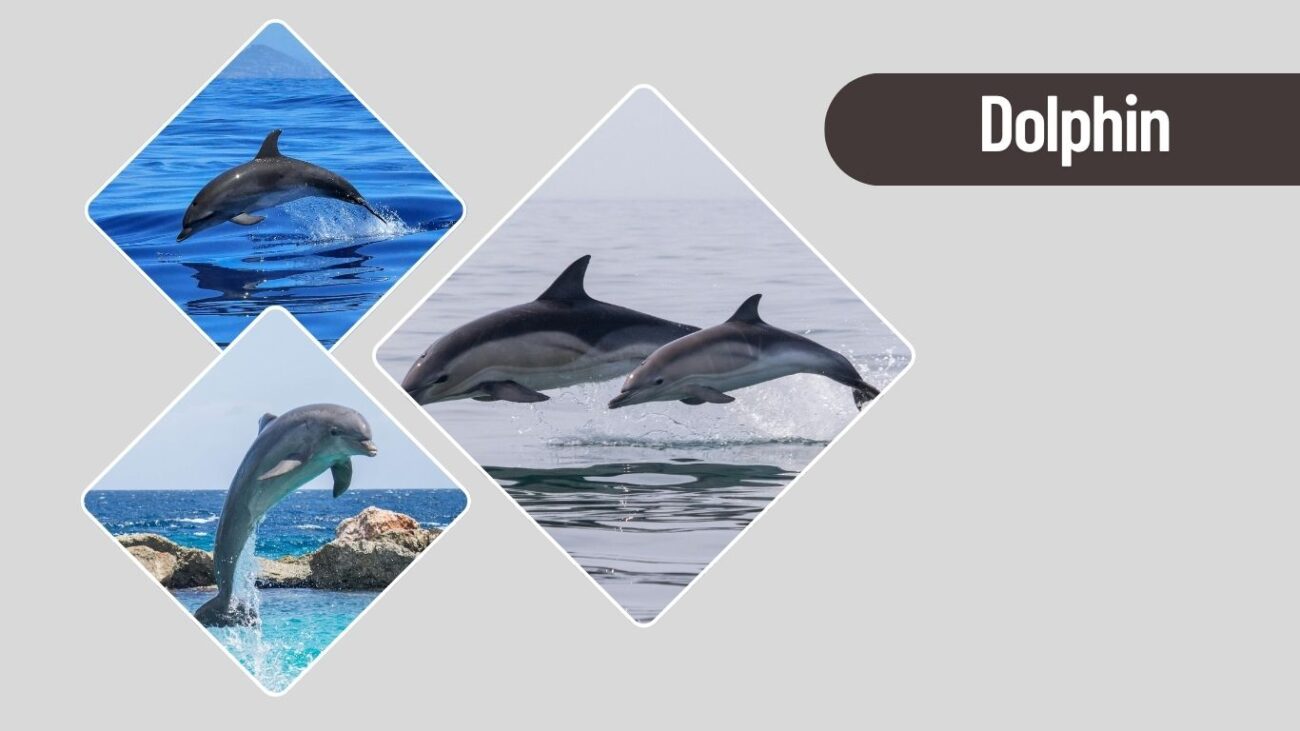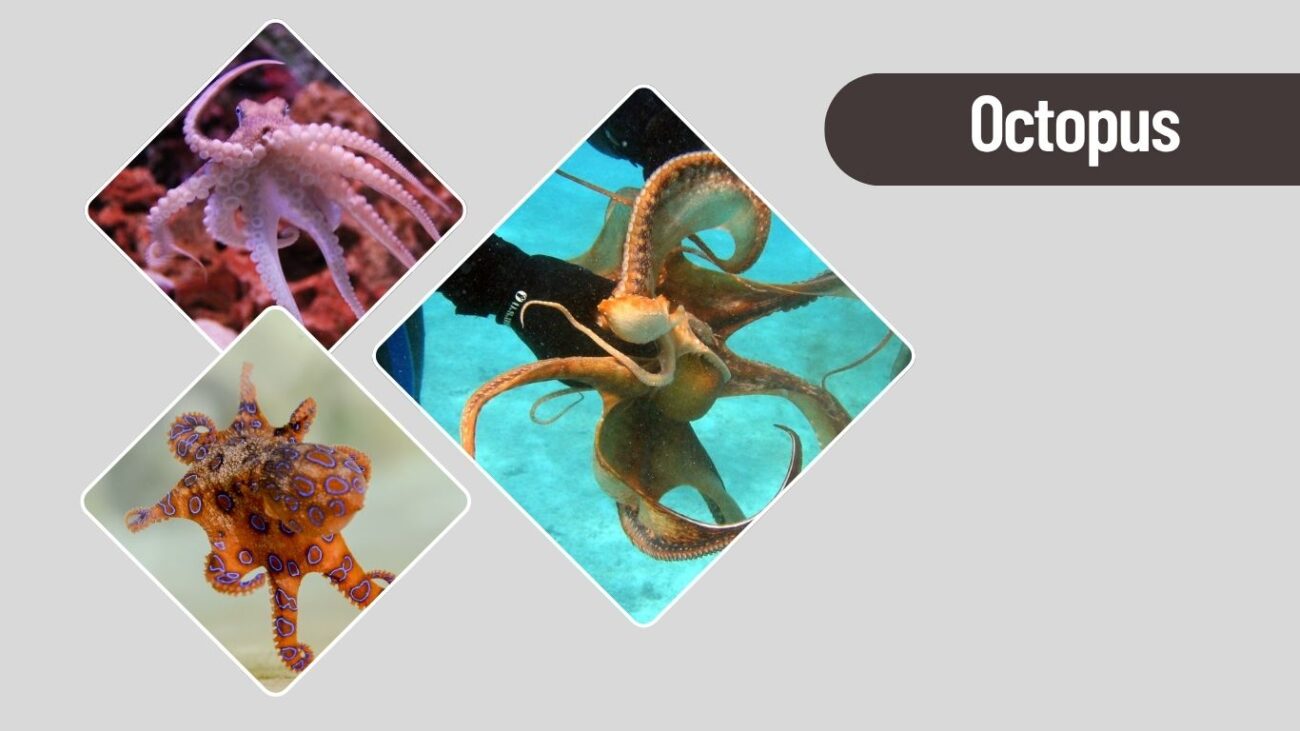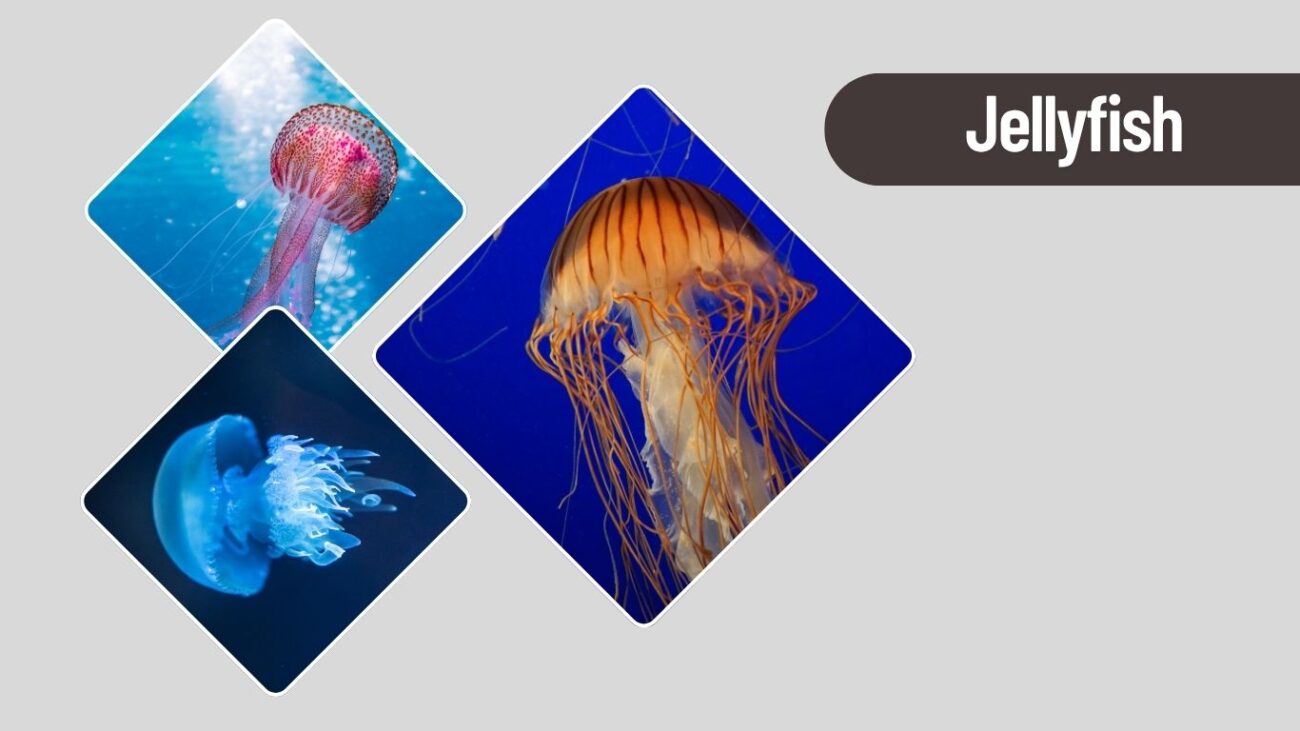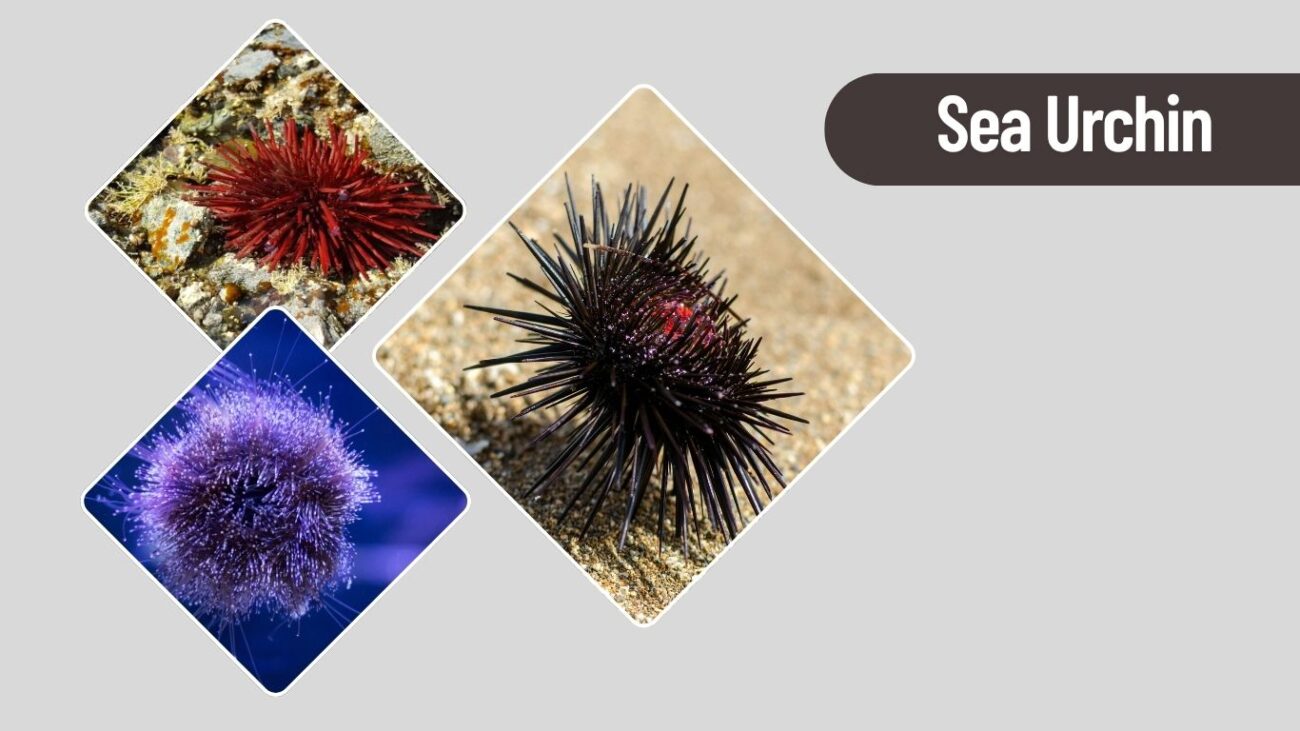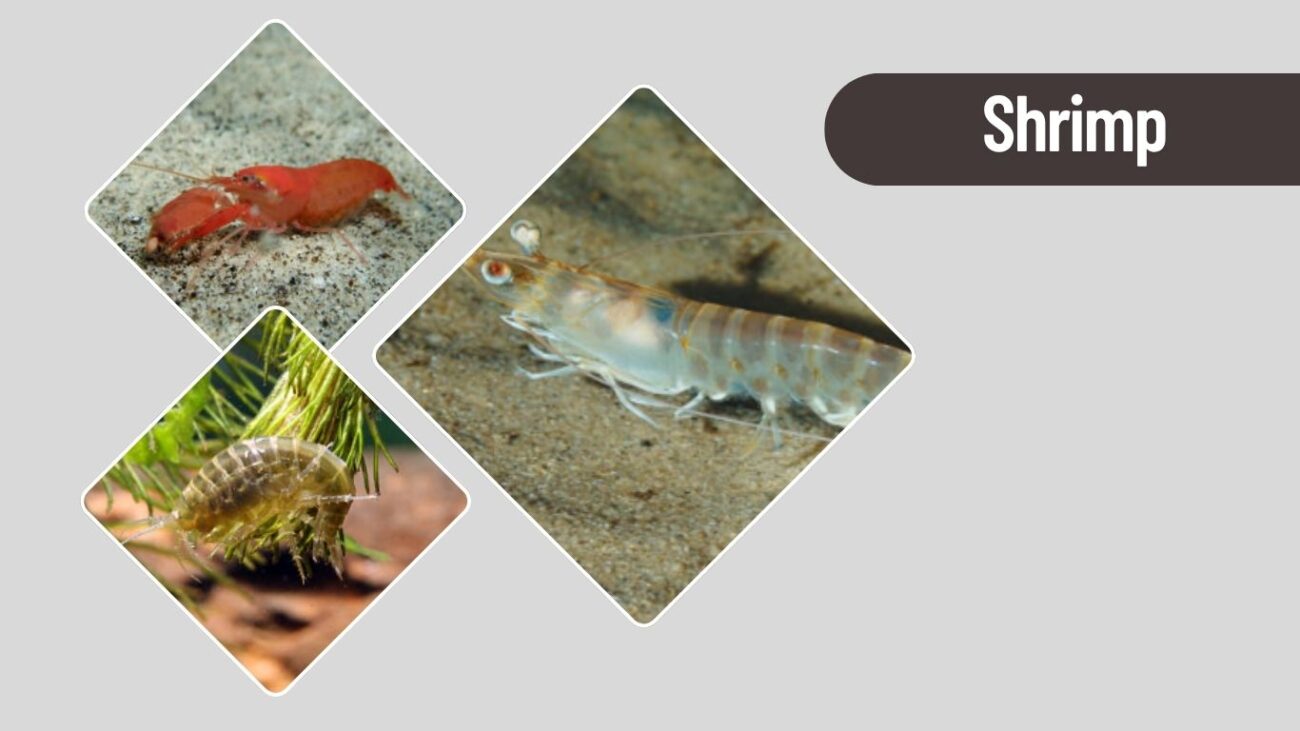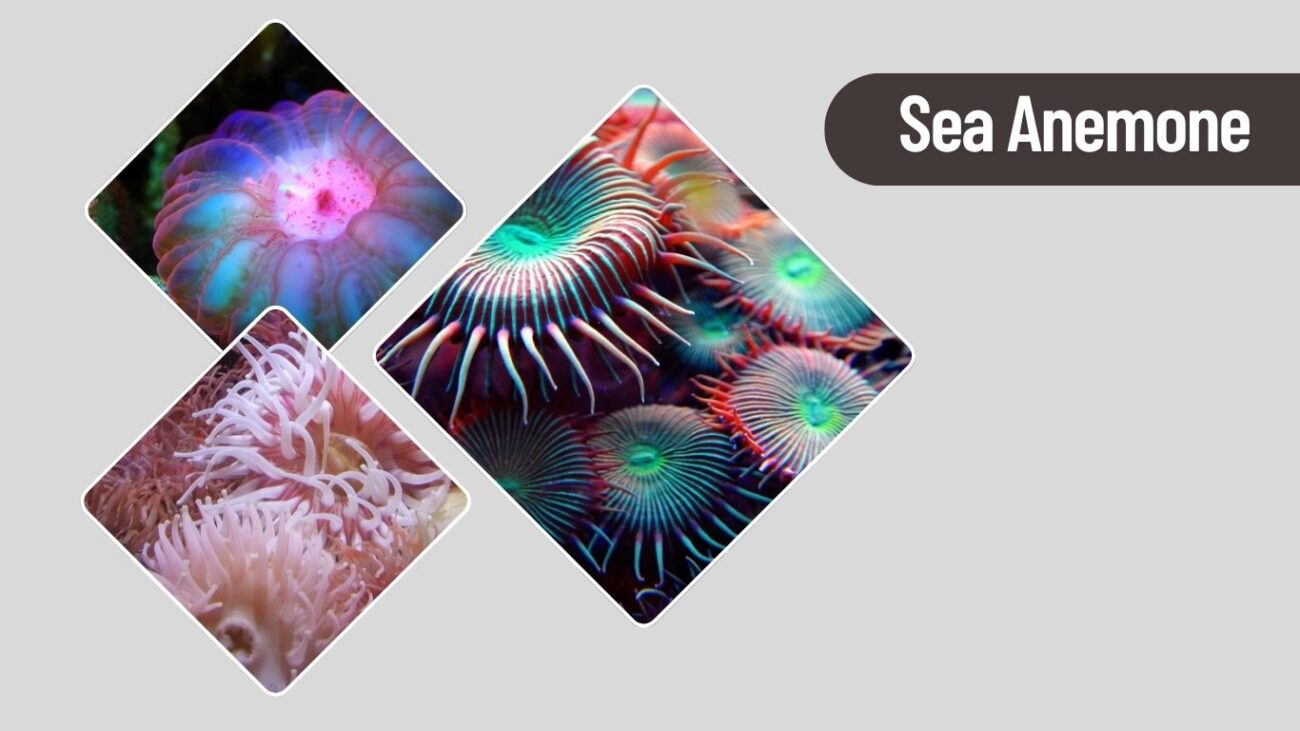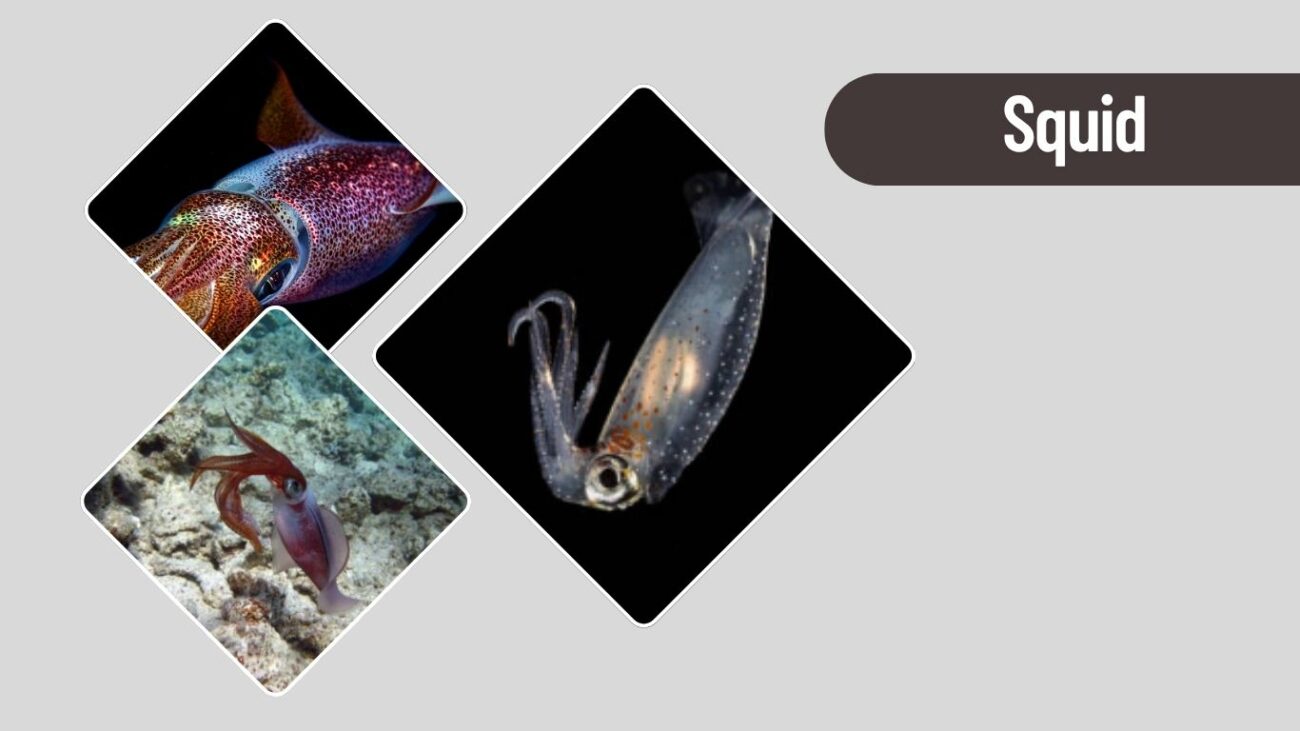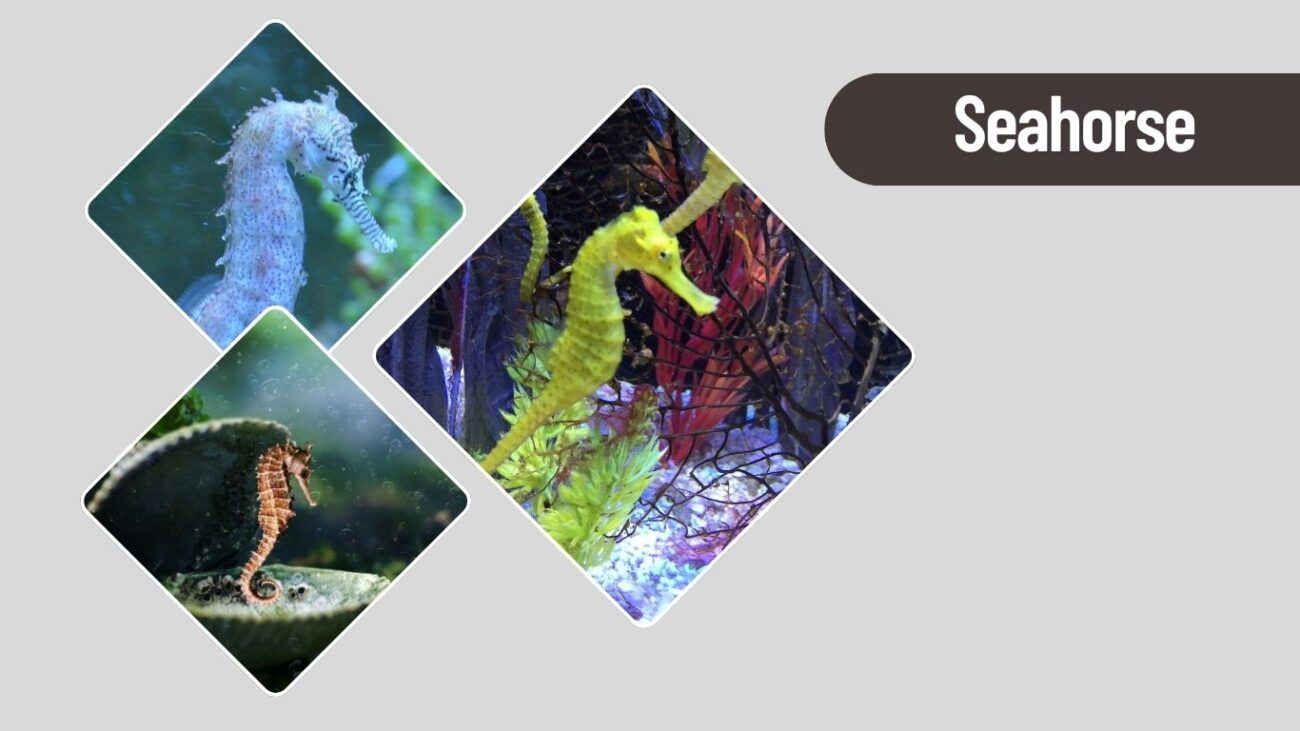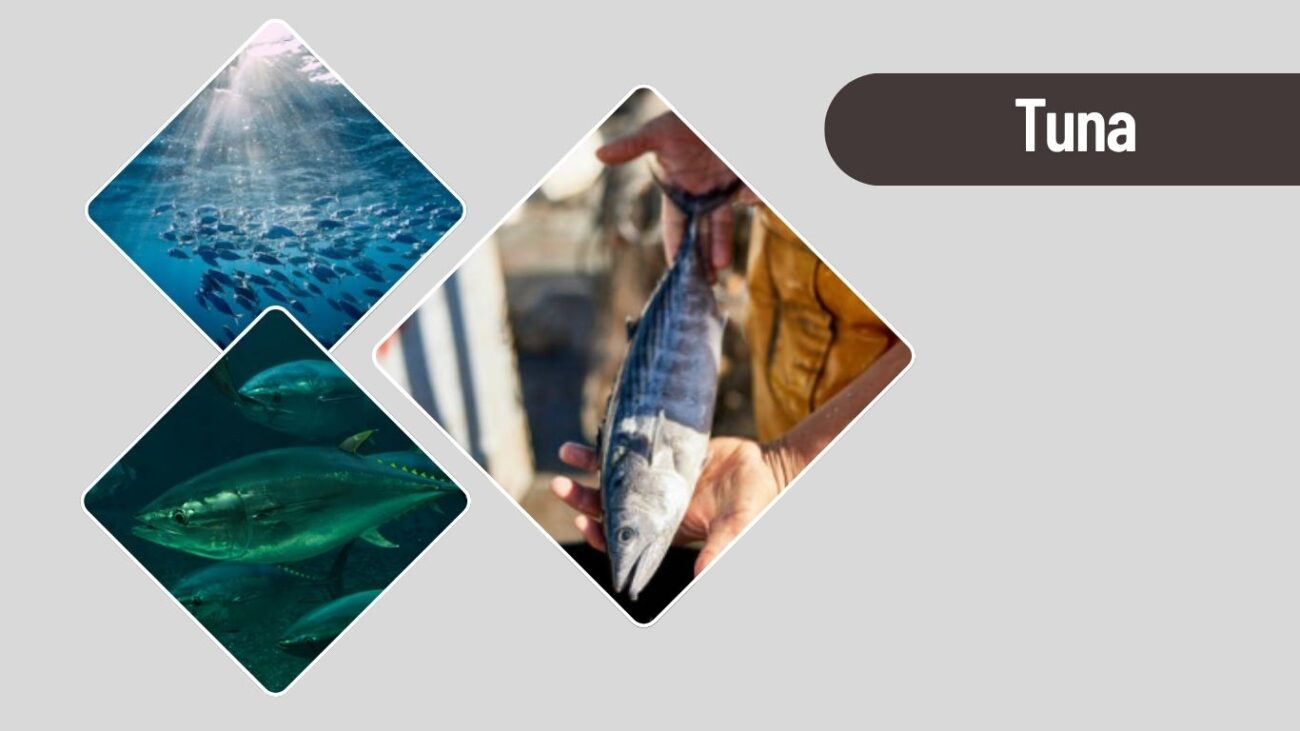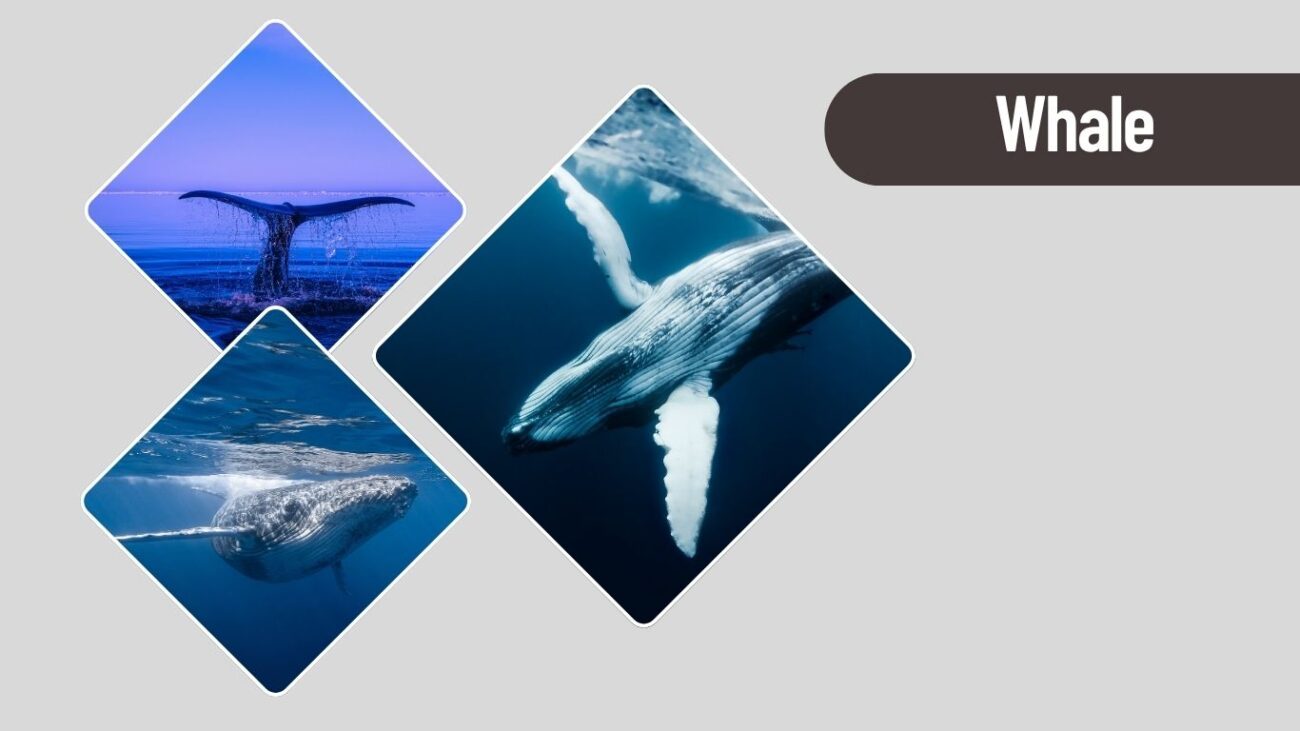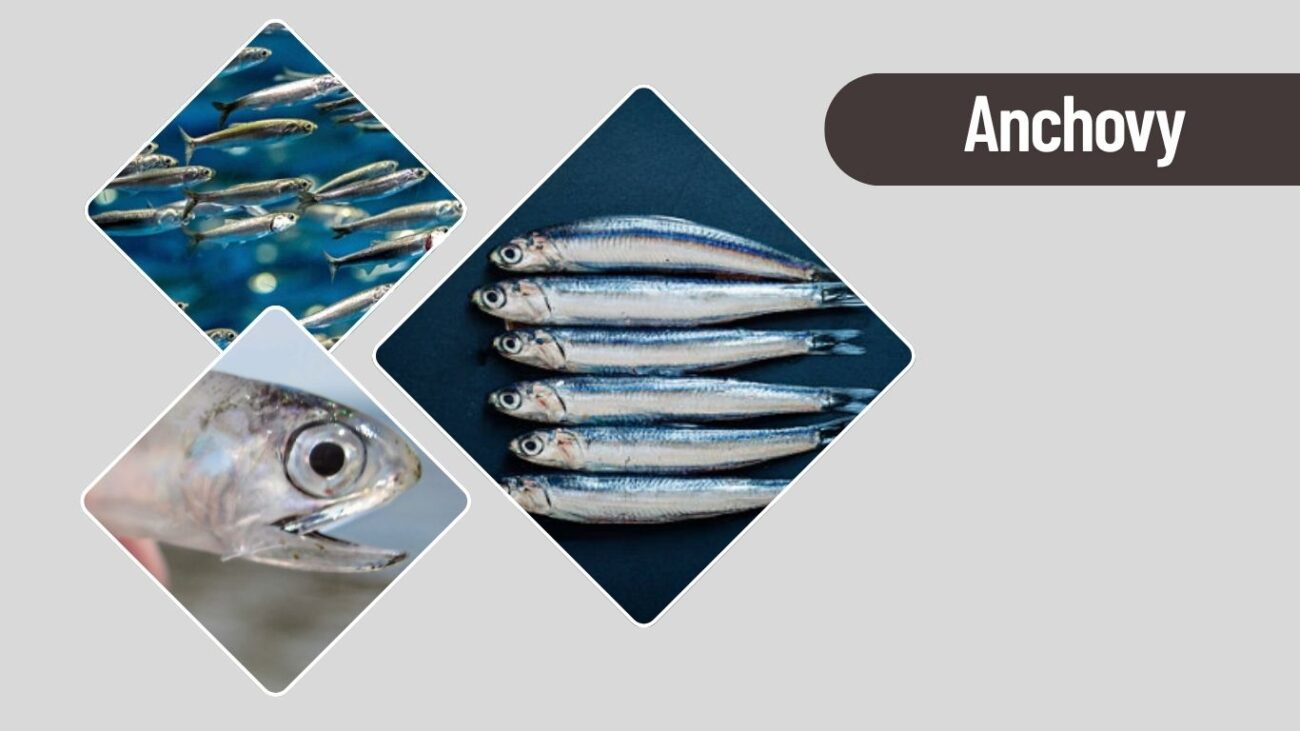The ocean is home to an incredible variety of life, from tiny crustaceans to massive marine mammals. This list highlights 20 of the most common and fascinating sea creatures found in oceans around the world. Whether you’re exploring tide pools, diving in coral reefs, or just curious about marine life, these animals represent the diversity and beauty of our underwater world.
1. Clownfish
Clownfish are small, brightly colored reef fish famous for their orange bodies with white stripes. They’re best known for their symbiotic relationship with sea anemones and their starring role in the movie Finding Nemo. These social and resilient fish are a common sight in warm ocean reefs.
Identification
- Bright orange body with three vertical white bands
- Rounded fins and small size (typically 3–4 inches)
- Black borders around the white bands
- Smooth scales and expressive eyes
- Males are usually smaller than females
Habitat and Range
Clownfish are found in warm tropical waters of the Pacific and Indian Oceans, particularly around coral reefs and lagoons. They always live within sea anemones, gaining protection from predators through mutualism.
Behavior and Traits
Clownfish are territorial, often staying close to their host anemone. They are sequential hermaphrodites, meaning males can become females if the dominant female dies. Their vibrant appearance and fascinating lifestyle make them one of the most recognizable and beloved sea creatures.
2. Starfish
Starfish, also known as sea stars, are iconic marine invertebrates recognized for their radial symmetry and slow, graceful movements. Though simple in structure, they play an important role in ocean ecosystems and are commonly found in coastal areas.
Identification
- Usually have five arms (some species have more)
- Central disc with tube feet on the underside
- Rough or spiny skin in various colors—red, orange, purple, blue
- Size ranges from a few inches to over 2 feet
- No brain or blood—uses water vascular system
Habitat and Range
Found in oceans worldwide, from shallow tide pools to deep-sea environments. Common in rocky shores, coral reefs, and sandy seabeds.
Behavior and Features
Starfish feed by extending their stomachs to digest prey like mollusks externally. They have regenerative abilities, allowing them to regrow lost arms and, in some cases, entire bodies.
3. Sea Turtle
Sea turtles are ancient marine reptiles known for their graceful swimming and long lifespans. With their gentle eyes and slow movements, they’re among the most beloved sea animals worldwide.
Identification
- Hard, streamlined shell (carapace)
- Paddle-like flippers for strong swimming
- No teeth—sharp beak instead
- Colors vary by species: green, olive, brown, or black
- Adults grow up to 4 feet long; hatchlings are about 2 inches
Habitat and Range
Found in tropical and subtropical oceans, often near coral reefs, seagrass beds, and sandy nesting beaches. Common around Florida, the Caribbean, Southeast Asia, and Australia.
Behavior and Life Cycle
Sea turtles are migratory, often traveling thousands of miles between feeding and nesting sites. Females lay eggs on beaches, and hatchlings instinctively head to the sea. Most species are now threatened or endangered due to pollution, poaching, and habitat destruction.
4. Dolphin
Dolphins are highly intelligent and social marine mammals known for their playful behavior and strong bond with humans. With their sleek bodies and friendly expressions, dolphins are one of the most familiar and loved sea creatures.
Identification
- Streamlined body with smooth, rubbery skin
- Usually gray with a lighter belly
- Long beak-like snout and curved dorsal fin
- Grows between 6 to 13 feet, depending on species
- Uses echolocation for navigation and hunting
Habitat and Range
Found in oceans and coastal areas worldwide, especially in warm and temperate waters. Some species also inhabit rivers and estuaries.
Behavior and Intelligence
Dolphins live in groups called pods and communicate with clicks and whistles. They display remarkable intelligence, often engaging in play, hunting cooperation, and problem-solving.
5. Octopus
Octopuses are fascinating sea creatures known for their soft bodies, eight arms, and high intelligence. With their ability to camouflage, escape predators, and solve puzzles, they are some of the most unique and clever animals in the ocean.
Identification
- Soft, bulbous body with eight flexible arms
- Suction cups along each arm
- Varies in color—can change skin color and texture
- No bones, allowing them to squeeze through tight spaces
- Size varies from a few inches to several feet
Habitat and Range
Found in all oceans, from shallow reefs to deep-sea environments. Common in rocky crevices, coral reefs, and sandy bottoms.
Behavior and Abilities
Octopuses are solitary and highly intelligent, capable of using tools and solving mazes. Their camouflage skills, ink defense, and quick movements help them evade predators effectively.
6. Jellyfish
Jellyfish are gelatinous, free-floating sea creatures known for their bell-shaped bodies and trailing tentacles. Despite having no brain or heart, they have survived for over 500 million years, making them one of the oldest animals in the ocean.
Identification
- Transparent, umbrella-shaped bell with dangling tentacles
- Body is 95% water
- Varies in size from less than an inch to over 6 feet across
- Some glow in the dark (bioluminescence)
- Tentacles contain stinging cells (nematocysts)
Habitat and Range
Found in oceans worldwide, from surface waters to deep sea trenches. Often seen in open seas, coastal bays, and near the shore.
Behavior and Movement
Jellyfish drift with ocean currents and pulse gently to move. They feed on plankton, fish larvae, and small marine animals. Some species deliver a painful sting, while others are harmless and mesmerizing to watch.
7. Sea Urchin
Sea urchins are small, round echinoderms covered in spines. These spiky creatures may look intimidating, but many species are harmless and play a vital role in ocean ecosystems by grazing on algae.
Identification
- Spherical body covered with movable spines
- Tube feet underneath for movement and feeding
- Often dark purple, black, red, or green
- Range in size from 1 inch to over 4 inches
- Hard shell (test) made of calcium carbonate
Habitat and Range
Common in shallow rocky coastlines, coral reefs, and kelp forests, found in oceans worldwide, especially in temperate and tropical zones.
Behavior and Role
Sea urchins feed on algae, kelp, and organic debris, helping maintain the health of reef systems. Their spines protect them from predators, and some species are collected for food or scientific research.
8. Shrimp
Shrimp are small, agile crustaceans found in oceans all over the world. Known for their curved bodies and long antennae, they play a crucial role in marine food chains and are also a popular seafood choice.
Identification
- Segmented, semi-transparent body with a hard exoskeleton
- Long antennae and multiple legs
- Typically 1 to 3 inches in length, though some grow larger
- Vary in color: gray, pink, red, or striped depending on species
- Strong tail used for quick backward movement
Habitat and Range
Found in shallow coastal waters, estuaries, and deep-sea habitats. Common in both tropical and temperate oceans.
Behavior and Importance
Shrimp are scavengers and detritivores, feeding on algae, dead organisms, and small invertebrates. They are a key food source for fish, whales, and humans alike, and are essential to many ecosystems.
9. Crab
Crabs are crustaceans with a broad, flat body and strong claws. With their sideways walk and armored shell, they’re some of the most recognizable and widespread sea creatures.
Identification
- Hard exoskeleton and a rounded or square-shaped body
- Five pairs of legs, including one pair of claws (chelae)
- Size varies greatly—from tiny pea crabs to giant spider crabs
- Come in a variety of colors: red, brown, blue, or mottled
- Can regrow lost limbs over time
Habitat and Range
Crabs are found in coastal waters, estuaries, tide pools, and even deep-sea environments. They inhabit oceans worldwide, especially in rocky shores and sandy beaches.
Behavior and Role
Crabs are omnivores, feeding on algae, small animals, and organic debris. Some species burrow, while others hide under rocks. Their behavior and appearance vary widely, making them a fascinating part of marine life.
10. Lobster
Lobsters are large, bottom-dwelling crustaceans known for their strong claws, segmented bodies, and long lifespans. They’re both ecologically important and a sought-after delicacy in coastal cuisines.
Identification
- Hard exoskeleton and elongated body
- Two large claws: one for crushing, one for cutting
- Long antennae and multiple walking legs
- Dark green, brown, or blue in the wild (turn red when cooked)
- Can grow over 2 feet long and weigh up to 40 pounds
Habitat and Range
Common in cold, rocky waters of the North Atlantic Ocean, especially near Canada, the northeastern U.S., and parts of Europe. Found on seafloors, reefs, and in crevices.
Behavior and Diet
Lobsters are nocturnal scavengers, feeding on fish, mollusks, algae, and other organic material. They grow by molting and can live for decades if undisturbed by predators or fishing.
11. Moray Eel
Moray eels are long, snake-like fish known for their sharp teeth and secretive nature. Despite their fearsome appearance, they’re usually shy and hide in crevices during the day.
Identification
- Elongated, muscular body with smooth, scaleless skin
- Sharp, curved teeth and a wide mouth
- Colors vary: green, brown, yellow, or spotted
- Can grow from 1 foot to over 10 feet long
- Lacks pectoral and pelvic fins
Habitat and Range
Found in warm and tropical ocean waters, especially in coral reefs, rocky crevices, and under ledges across the Indo-Pacific, Atlantic, and Caribbean.
Behavior and Feeding
Moray eels are ambush predators, feeding on fish, octopuses, and crustaceans. They have a second set of jaws (pharyngeal jaws) that pull prey down. Though they may look intimidating, they generally avoid human interaction.
12. Sea Anemone
Sea anemones are colorful, flower-like marine animals that attach to rocks or coral. Though they look like plants, they are actually predators with stinging tentacles used to catch prey.
Identification
- Soft, cylindrical body with a sticky base (pedal disc)
- Crown of tentacles surrounding a central mouth
- Brightly colored—red, pink, green, orange, or purple
- Size ranges from less than 1 inch to over 6 feet across
- Tentacles contain stinging cells (nematocysts)
Habitat and Range
Found in oceans worldwide, especially in coral reefs, rocky coasts, and tidal pools. They thrive in both shallow and deep waters.
Behavior and Symbiosis
Sea anemones are sessile, meaning they stay fixed in one spot. Many species form symbiotic relationships with clownfish, offering protection in exchange for cleaning and food scraps.
13. Squid
Squids are fast-swimming cephalopods known for their torpedo-shaped bodies, tentacles, and ability to squirt ink. They are intelligent, agile hunters and play an important role in marine ecosystems.
Identification
- Elongated, soft body with eight arms and two longer tentacles
- Large eyes and a beak-like mouth
- Jet propulsion system for rapid movement
- Some species have light-producing organs (bioluminescence)
- Size ranges from a few inches to over 40 feet (giant squid)
Habitat and Range
Found in oceans worldwide, from coastal waters to the deep sea. Especially abundant in temperate and tropical zones.
Behavior and Defense
Squids are active hunters, feeding on fish, crustaceans, and other marine life. When threatened, they release ink clouds to escape predators. Many species also exhibit color-changing abilities for camouflage and communication.
14. Seahorse
Seahorses are tiny, upright-swimming fish known for their horse-like head and curled tail. Their delicate appearance, slow movements, and unusual breeding habits make them one of the most fascinating and charming sea creatures.
Identification
- Small, bony body with an upright posture
- Horse-like head with long snout
- Curled, prehensile tail for gripping seagrass or coral
- Males have a brood pouch for carrying eggs
- Range in size from ½ inch to 14 inches
Habitat and Range
Found in shallow coastal waters, especially in seagrass beds, coral reefs, and mangroves. Common in the Atlantic, Pacific, and Indian Oceans.
Behavior and Breeding
Seahorses are poor swimmers, often staying anchored to vegetation. Uniquely, males carry and give birth to young. They use camouflage to blend into their surroundings and avoid predators.
15. Coral
Corals are marine invertebrates that form vibrant underwater structures called coral reefs. Though they look like colorful rocks or plants, corals are actually colonies of tiny animals called polyps.
Identification
- Hard or soft body made of calcium carbonate (in hard corals)
- Polyps have tentacles that extend for feeding
- Come in many shapes: branching, brain-like, plate, or mound
- Range in color: pink, red, green, yellow, and more
- Reefs grow slowly—some just a few centimeters per year
Habitat and Range
Found mostly in shallow, warm tropical waters, especially in the Indo-Pacific, Great Barrier Reef, and Caribbean. Require sunlight and clear water to thrive.
Role in Ecosystem
Coral reefs support over 25% of marine life. Corals feed on plankton and get energy from symbiotic algae (zooxanthellae). They are sensitive to temperature changes, making them vulnerable to bleaching and climate change.
16. Manta Ray
Manta rays are large, gentle filter feeders known for their wing-like fins and graceful swimming. Despite their massive size, they are harmless to humans and often display curious, peaceful behavior.
Identification
- Flat, diamond-shaped body with wing-like pectoral fins
- Forward-facing cephalic lobes near the mouth
- Smooth, dark upper side with white underside
- Can grow up to 23 feet across
- No stinger on the tail (unlike stingrays)
Habitat and Range
Found in tropical and subtropical waters around the Indian, Pacific, and Atlantic Oceans, especially near reefs and coastal areas.
Behavior and Movement
Manta rays feed on plankton by gliding with their mouths open through dense water columns. They are known for leaping out of the water, and often visit “cleaning stations” where smaller fish remove parasites.
17. Tuna
Tuna are fast, powerful fish known for their streamlined bodies and high speeds. Valued both as apex predators and for commercial fishing, they are among the most recognizable pelagic fish in the ocean.
Identification
- Torpedo-shaped body with metallic blue or silver coloration
- Small finlets between dorsal and tail fins
- Powerful crescent-shaped tail
- Size varies by species—from 2 feet to over 10 feet
- Warm-blooded, helping maintain speed in cold waters
Habitat and Range
Found in open oceans (pelagic zones) worldwide, particularly in tropical and temperate waters. Known for their long migrations across entire oceans.
Behavior and Importance
Tuna are schooling fish, often traveling in large, fast-moving groups. They feed on smaller fish, squid, and crustaceans. Popular in cuisine, especially yellowfin and bluefin tuna, but overfishing has led to conservation concerns.
18. Pufferfish
Pufferfish are small to medium-sized fish known for their unique ability to puff up into a ball when threatened. Their big eyes, round bodies, and slow swimming make them both charming and fascinating.
Identification
- Rounded body that inflates when threatened
- Some species have spines or rough skin
- Large eyes and small, beak-like mouth
- Usually 1 to 2 feet in length
- Brightly colored or patterned in tropical species
Habitat and Range
Found in warm and temperate oceans, especially in coral reefs, lagoons, and coastal areas. Some species also live in brackish and freshwater.
Behavior and Defense
Pufferfish inflate by sucking in water or air to deter predators. Many species produce tetrodotoxin, a deadly poison. Despite this, their quirky look and movements make them favorites among divers and marine hobbyists.
19. Whale
Whales are the largest animals on Earth, known for their intelligence, complex communication, and massive size. Despite their enormity, many whales are gentle giants, feeding on small prey like krill or schooling fish.
Identification
- Streamlined, torpedo-shaped body with horizontal tail flukes
- Blowhole(s) on top for breathing
- Size varies: from 20 feet (minke whale) to over 100 feet (blue whale)
- Skin color varies: gray, black, white, or mottled
- Some have baleen plates, others have teeth
Habitat and Range
Found in oceans worldwide, from polar to tropical waters. Different species have specific migratory routes between feeding and breeding grounds.
Behavior and Communication
Whales are highly intelligent and social, often living in pods. They use vocalizations, clicks, and songs to communicate. Some species migrate thousands of miles annually and are known to breach and tail-slap the surface.
20. Anchovy
Anchovies are small, silvery schooling fish that play a vital role in marine ecosystems. Despite their size, they are a key food source for many larger predators and are harvested for human consumption.
Identification
- Slim, elongated body with silver sides and greenish-blue back
- Large eyes and mouth extending past the eye
- Typically 2 to 6 inches long
- Single dorsal fin located mid-body
- Often slightly translucent
Habitat and Range
Found in coastal waters worldwide, especially in temperate and tropical zones. Common in the Atlantic, Pacific, and Mediterranean Seas.
Behavior and Importance
Anchovies swim in large schools and feed on plankton using filter-feeding techniques. They are prey for birds, larger fish, whales, and marine mammals. Anchovies are also used in cooking, especially in sauces and snacks.

